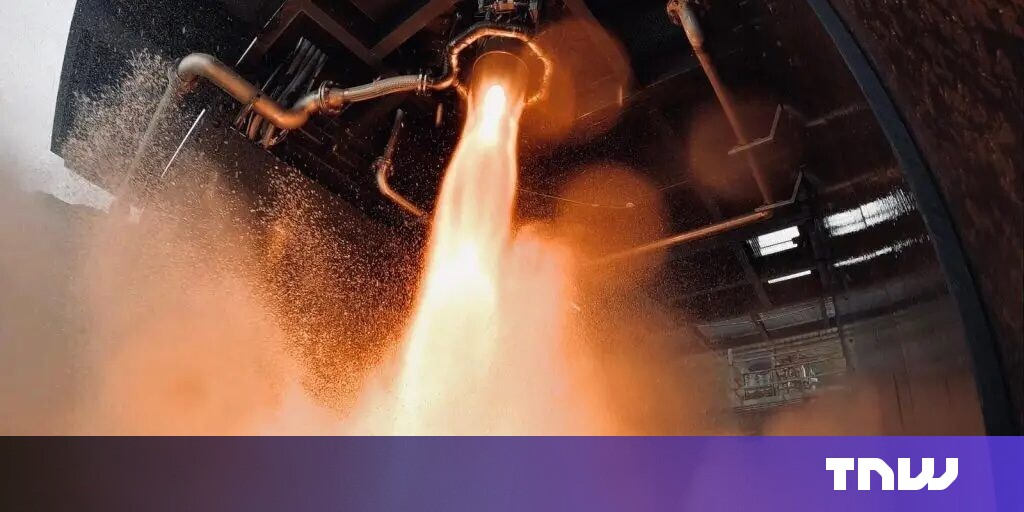Scotland Tests 3D-Printed Rocket Engine: Orbital Launch a Step Closer
Editor’s Note: Scotland has successfully tested a 3D-printed rocket engine, marking a significant leap towards independent orbital launch capabilities.
Why This Matters: Scotland's Space Ambitions Take Flight
Scotland's recent test of a 3D-printed rocket engine represents a pivotal moment for the nation's burgeoning space industry. This groundbreaking achievement moves the country closer to its ambitious goal of establishing a sovereign orbital launch capability, boosting economic growth and solidifying its position in the global space race. The successful test underscores the potential of additive manufacturing in revolutionizing rocket propulsion, paving the way for faster, cheaper, and more efficient space exploration. This development has significant implications for both commercial and scientific space missions, potentially opening new avenues for research, satellite deployment, and space tourism.
Key Takeaways
| Feature | Description |
|---|---|
| Technology | 3D-printed rocket engine, showcasing additive manufacturing's potential. |
| Location | Scotland, signifying a significant step for the nation's space program. |
| Impact | Advances independent orbital launch capabilities, boosting economic growth. |
| Significance | Revolutionizes rocket propulsion, enabling faster, cheaper, and more efficient space travel. |
Scotland Tests 3D-Printed Rocket Engine
This significant advancement in rocket technology positions Scotland as a key player in the global space race. The successful test of the 3D-printed engine demonstrates the feasibility and efficiency of additive manufacturing in creating complex rocket components. This process offers numerous advantages over traditional manufacturing methods, including reduced production time, lower costs, and enhanced design flexibility. The ability to rapidly iterate and refine engine designs using 3D printing promises quicker innovation cycles and more efficient propulsion systems.
Key Aspects of the 3D-Printed Engine
- Material: The specific materials used in the 3D-printed engine are yet to be fully disclosed, but likely incorporate advanced alloys designed to withstand the extreme pressures and temperatures encountered during rocket launch.
- Design: The engine's design likely features complex internal geometries optimized for efficient fuel combustion and thrust generation. This level of intricacy would be challenging to achieve using conventional manufacturing methods.
- Testing: The test likely involved a series of rigorous performance evaluations, assessing the engine's thrust, fuel efficiency, and overall reliability under simulated launch conditions.
Detailed Analysis: A Paradigm Shift in Rocket Propulsion
The successful test represents more than just a technological advancement; it signifies a potential paradigm shift in how rocket engines are designed and manufactured. The speed and flexibility afforded by 3D printing could accelerate the pace of innovation in the space industry. This, in turn, could lower the barrier to entry for smaller companies and research institutions, fostering competition and driving further technological advancements.
Interactive Elements: Exploring the Implications
The Economic Impact of Independent Orbital Launch
The development of independent orbital launch capabilities has immense economic implications for Scotland. It creates high-skilled job opportunities in engineering, manufacturing, and related fields, attracting investment and boosting the local economy. Furthermore, it opens doors to a wide range of commercial opportunities in satellite deployment, space tourism, and scientific research. The ability to launch satellites from Scottish soil reduces reliance on foreign launch providers and potentially lowers launch costs.
Environmental Considerations of 3D-Printed Rockets
While the 3D-printing technology offers advantages, environmental impacts also need consideration. The energy consumption during the 3D-printing process and the sourcing of materials are key factors to analyze. Research into sustainable materials and energy-efficient 3D printing techniques are crucial for ensuring that this technology contributes to a more sustainable space industry.
People Also Ask (NLP-Friendly Answers)
Q1: What is a 3D-printed rocket engine?
A: A 3D-printed rocket engine is a propulsion system built using additive manufacturing, where layers of material are fused together to create complex engine components, offering greater design flexibility and efficiency compared to traditional methods.
Q2: Why is Scotland testing a 3D-printed rocket engine important?
A: This test is crucial as it advances Scotland's aim for independent orbital launch capabilities, stimulating economic growth, creating jobs, and positioning Scotland as a key player in the global space industry.
Q3: How can this benefit me?
A: Indirectly, this could lead to more affordable space technologies, improved satellite services, and potentially new job opportunities in the growing Scottish space sector.
Q4: What are the main challenges with 3D-printed rocket engines?
A: Challenges include ensuring the strength and reliability of the 3D-printed components under extreme conditions, developing sustainable manufacturing practices, and securing necessary funding and regulatory approvals.
Q5: How to get started in the Scottish space industry?
A: Explore educational opportunities in aerospace engineering, network with companies in the Scottish space sector, and look for internship or job opportunities within the industry.
Practical Tips for Following the Scottish Space Program
- Follow industry news: Stay updated on the latest advancements through reputable space news websites and publications.
- Attend space conferences: Network with professionals and learn about new developments in the field.
- Support Scottish space companies: Invest in or patronize businesses contributing to Scotland’s space ambitions.
- Learn about STEM fields: Pursue education and training in science, technology, engineering, and mathematics to contribute to future advancements.
- Advocate for space exploration: Encourage government support for the continued growth of Scotland’s space program.
- Engage in citizen science projects: Participate in space-related citizen science initiatives to contribute to research.
Summary: Scotland's successful test of a 3D-printed rocket engine marks a major step towards establishing independent orbital launch capabilities, offering significant economic and technological benefits.
Closing Message
This remarkable achievement underscores the power of innovation and Scotland's commitment to securing a leading role in the future of space exploration. What new frontiers will this technological leap unlock?
Call to Action: Share this exciting news with your network and stay tuned for future updates on Scotland's space program! [Link to related article/newsletter signup]

